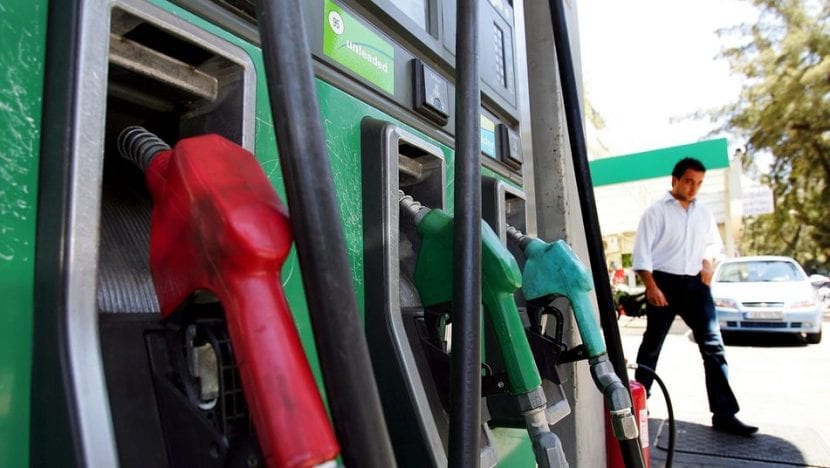
The year 2017 is about to conclude, once it is finished, it will be possible to reflect on the Spanish economy At this stage, what has happened and how this year has ended in this regard; its effects, how much it has grown, what has happened to employment, the public deficit, etc. Some magnitudes macroeconomics such as GDP and the Unemployment Rate, they will provide us with important data for various analyzes.
We are preparing to evaluate, as a summary, about what is planned and estimated for these twelve months. We will present forecasts given before and after the beginning of the year.
In this way, we will have information with the capacity to be confronted with reality, once 2017 is over.
We do not intend to be conclusive regarding what really happened, but rather what was said and estimated by different organizations, authorities and experts. Something that is about to be proven when the year is over.
In 2015, the Institute of Economic Studies was projected saying that 2017 would be a turning point for the Spanish economy. He went on to say that what helped the economy in that year would hurt it in 2017.
The IEE stated at that time that the Spanish economy presented a very strong expansionary inertia, something advantageous for a time, but that in 2017 an upward cycle of interest rates and prices of raw materials would begin. Just a large part of the growth of the Spanish GDP has been due to the cheaper raw materials, especially oil, that the country needs to import.
In 2016, many private analysts and international organizations stated that despite many existing drawbacks, Spain would continue to be the country that would grow the most in 2017, compared to the main economies in Europe.
For this year 2017 the (GDP) - Gross Domestic Product, was estimated by the Spanish government at 1.137 million, a growth of 2.5%. The estimate for the number of unemployed was 4.3 million. Estimating the unemployment rate at 18.9
As the course of this year progressed, many analysts consecutively raised their growth expectations or forecasts for the economy in Spain compared to previous forecasts. This happened, among other issues, since sustained job creation was maintained and exports showed good evolution.
In 2016, many experts expected GDP to slow down to almost a point and gave as strong causes for this event, the “Brexit” situation in the United Kingdom and the interim problems existing in the Spanish Government.
Despite these omens, the forecasts in that sense, already started the year, showed high probabilities of having an economic growth greater than that of 2016, which was (3.2%) and there were some causes for this event, a dynamism perhaps not so expected in employment and investment.
Let's examine the projections of some authorities, experts and organizations

Throughout 2017, different international organizations such as the European Commission and IMF (International Monetary Fund) and also other nationals, were increasing their respective forecasts. For example, the OECD at the beginning of June increased the GDP estimate to 2.8%.
In July the IMF revised the rise in GDP to 3.1% this year (from 2.6% previously).
La European Commission revealed his opinion that Spain would also default on the deficit in 2017. Luis de Guindos, Minister of Economy, said at the time that the public deficit would be below 3% of GDP this year, although the European Commission had placed the figure at 3.1% in the spring forecast.
Guindos also assured that "except for a debacle, it would be very difficult for Spain to grow below 2.7" this year, observing an already verified growth of 3.4 in the first quarter, as revealed by the National Institute of Statistics (INE).
The Economic Council made estimates in the first quarter of the year and reflected that the Spanish economy would grow by 2.7%.
European Commission
In the month of May, the European Comission He said that Spain's economic advance was above the rest of the European countries. He calculated that the economy would be growing 2.8% this year.
He pointed out that there would be strong job creation, although unemployment would be above the average for other countries in the region. He said that the fiscal hole would end this year at 3.2% of GDP, commenting on the deficit in public accounts.
Expert Panel

At the beginning of the year, according to the panel of more than 350 Spanish experts, managers and businessmen prepared by PwC; the economic situation in Spain was favorable, and they said that this situation would last until the end of the year, due to a relatively good situation in consumption, exports, financing conditions for companies and individuals, plus other favorable variables such as employment and productive investment.
47.6% of those surveyed considered that the family consumption it would be increasing in the year. 55.2% predicted that the demand for housing would increase. 66.7% estimated that job creation would continue to increase, 59% believed that something similar would happen with exports and 48.6% said that the same would happen with productive investment.
These experts spoke about the tourism sector being the one who would lead the growth in the country, 91.2% of them had this opinion.
The panelists affirmed that employment would be growing in sectors such as tourism and construction, which are traditional; but that it would also be doing it in the more emerging sectors such as health, transport and logistics, culture, etc.
They expect negative results, regarding the elimination of jobs for the financial and insurance sector.
Bank of Spain
The Bank of Spain considered in April that inflation would be well marked in 2017, this is due to the evolution of oil prices. The prices of this product were expected to stabilize in the rest of the year, helping to slow down the CPI. He also anticipated employment growth at high rates, which would result in modest productivity gains.
BBVA Research
In August 2016, the BBVA analysis service He said that next year Spain's economy would slow down due to the effects of “Brexit” on it, and that it would cost it four tenths of growth.
They commented at that time that the vulnerability of the Spanish economy was increasing and that many elements anticipated downward biases in 2017. They forecast a growth of 2.3% for this year.
Apart from “Brexit”, they affirmed that the existence of uncertainty regarding monetary policy and some fiscal measures, made them moderate regarding expectations for 2017.
In that 2016 study, they said that the determining factor when detailing the composition of growth continued to be household consumption.
At that time, they predicted that there would be an increase in job creation of around 800.000 jobs and that the unemployment rate could be reduced to around 18.2%
Already in 2017, BBVA was hopeful about the favorable evolution of the Spanish economy. They came to foresee GDP growth of up to 3% this year, being very optimistic estimates.
They said that the growth of the economy in the country would be uneven by autonomous communities. The Balearic Islands as the community that would be growing the most this year, followed by the Canary Islands and Madrid, Andalusia and Castilla-La Mancha.
They estimated that nine autonomous communities would be growing below the national average, the most lagging behind Asturias, Cantabria and Extremadura.
FUNCAS - Savings Banks Foundation

In May of this year, the Savings Banks Foundation (Funcas) he also made economic forecasts. GDP growth was estimated at 2.8%, saying that the four autonomous regions that would be growing the most would be Madrid, the Balearic Islands, Catalonia and Galicia.
Referring to unemployment and the creation of new jobs, he gave an estimated 450.000 new job positions, which will reduce the unemployment rate to 17.5%.
Regarding the public administration deficit, he concluded that the timely economic evolution of the country should allow its reduction, but not so much as to meet the 3.1% of GDP that was agreed with Brussels.
AIReF - Independent Authority for Fiscal responsibility
This organism predicted a growth of the economy of 3.2%, this being a forecast two tenths more than that of the Government (+ 3%). GDP growth forecast it was at 0.85% in the third quarter and 0.81% for the fourth.
Regarding the Spanish economy, in this almost finished 2017, we have summarized some of the forecasts that were made before the beginning of the year and after it began.
It will then be possible to compare what was thought and calculated by the experts with what has really been in the course of these twelve months, a subject that will have to be investigated and deepened to reach accurate conclusions.